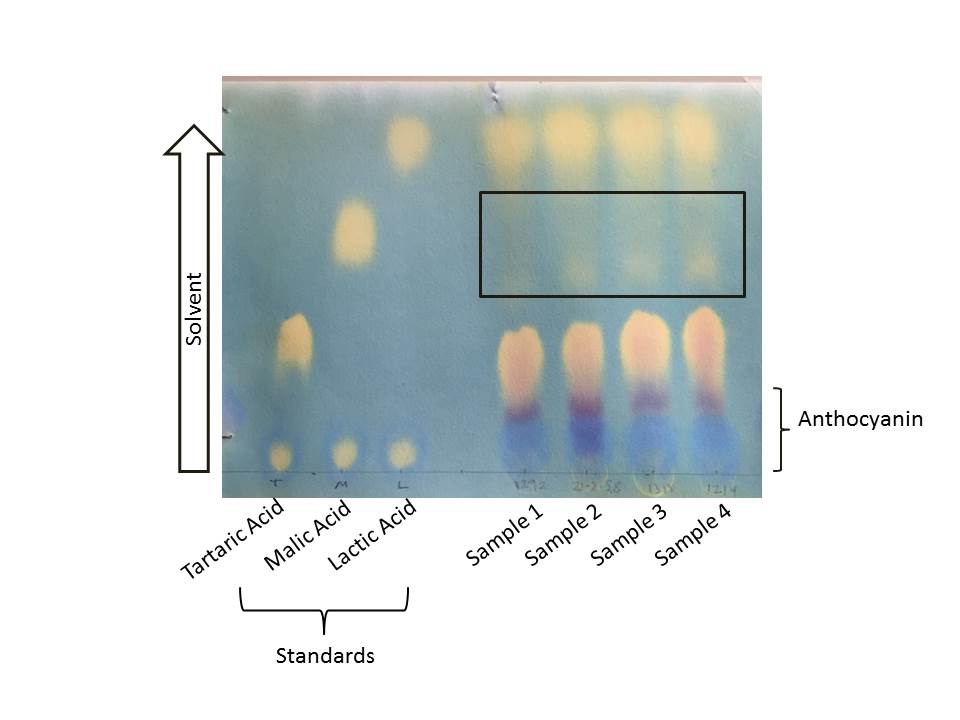Drew Horton, Enology Specialist
Matthew Clark, Assistant Professor
10/6/2016
Each wine harvest season as the picking ends and the last wines are completing primary yeast fermentation, it is often asked about how to know when your secondary or "malolactic" fermentation has completed? "MLF", as it is known, is a bacterial fermentation that can occur naturally, or as an addition, in a wine, which converts most of the stronger or harsher malic acid into the softer and "rounder" lactic acid. Think of malic as the "green apple" acid and lactic as the weaker acid in dairy products; cream, butter, cheese, and etc. as the names imply. MLF can change the sensory perception of the wine (less sour due to lower TA and higher pH) as well as changes in the mouthfeel with the development of additional compounds that add to a wine’s body such as glycerol.
99% of the red wines made in the world are allowed or encouraged to complete MLF as one of the beneficial effects of MLF is to lower total acidity in a wine. Its use in white wines is mostly limited (to Champagne and white Burgundy wines) as it can negatively mute and/or alter the fresh fruit flavors and aromas in most white wines.
Paper Chromatography is an easy and inexpensive method used to determine if MLF has finished, or completed. A kit with solvents and paper for analyzing 50 wine samples can be purchased on-line through various vendors including www.piwine.com, who have a kit for $60: http://www.piwine.com/chromatography-test-kit-vertical-paper.html
Testing is easy to do and the results are simple to read. Figure 1 is a sample of a test executed on four red wines here at the UMN Horticulture Research Center. Three standards are utilized (tartaric, malic, and lactic acid) to show their migration and serve as a reference to the wine samples. In this case, all 4 wines have undergone MLF, as there is very little malic acid evidence on the chromatograph.
Follow the manufacture directions carefully. Special consideration should be taken as the solvent used does require a place with adequate ventilation. The paper can be dried overnight in a garage or shed or other place with sufficient ventilation.
There are other options available from commercial labs to test your MLF, but they can start to get expensive if you are doing multiple wines and if you include shipping time and cost.
Figure 1. Paper chromatograph showing the three acid standards (tartaric, malic, and lactic acid) and 4 wine samples. The reference standards show the relative migration of the compounds in each sample in the direction of the solvent. You can see that lactic acid moves the farthest on the chromatograph. There is little evidence for malic acid remaining in the wine samples as shown in the rectangle. However you can see that tartaric acid remains.
